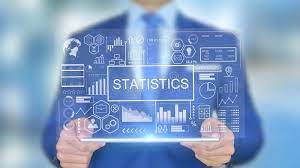Statistics Exit Exam Practice Exam
in University Exit ExamWhat you will learn?
Upon successful completion of this exit exam, students will have demonstrated their proficiency in statistical analysis and data interpretation.
They will be able to confidently apply statistical techniques to analyze data, make informed decisions based on statistical results, and effectively communicate their findings.
About this course
The Statistics Exit Exam Practice Exam is designed to help you prepare for your final statistics exit exam. This practice exam provides a simulated testing environment where you can assess your knowledge and skills in various statistical concepts and techniques. The exam covers topics such as descriptive statistics, probability, hypothesis testing, and statistical inference. By taking this practice exam, you can evaluate your understanding of statistical principles, identify areas that require further study, and build confidence for the actual exit exam.
Requirements
To take this exit exam, students must have completed a course in statistics or a related field.
Familiarity with statistical software such as R is recommended.
FAQ
Comments (1)
Here are some of the basic concepts and terminology in forensic psychology that you may want to include in your course:
Here are some of the most common types of data and data collection methods:
Here are some of the most common descriptive statistics and data visualization techniques:
Here is an introduction to probability:
Here are some of the most important probability rules and distributions:
Here are some of the most important sampling techniques and the central limit theorem:
Here is an introduction to hypothesis testing:
Here is an introduction to one-sample and two-sample tests:
Here is an introduction to Type I and Type II errors:
Here is an introduction to simple linear regression:
Here is an introduction to multiple linear regression:
Here is an introduction to model evaluation and interpretation:
Data cleaning and preparation is the process of ensuring that data is accurate, complete, and consistent before it can be used for analysis.
Data exploration is the process of examining data to understand its characteristics and to identify patterns and trends.
Data visualization is the process of transforming data into a visual format that makes it easier to understand.
Here is an introduction to confidence intervals:
Here is an introduction to parametric and non-parametric tests:
Here is an introduction to the chi-square test and ANOVA:
Here is an introduction to statistical software:
Here is an introduction to data manipulation and analysis in R:
Here is an introduction to the interpretation and reporting of results:



.png)






very good